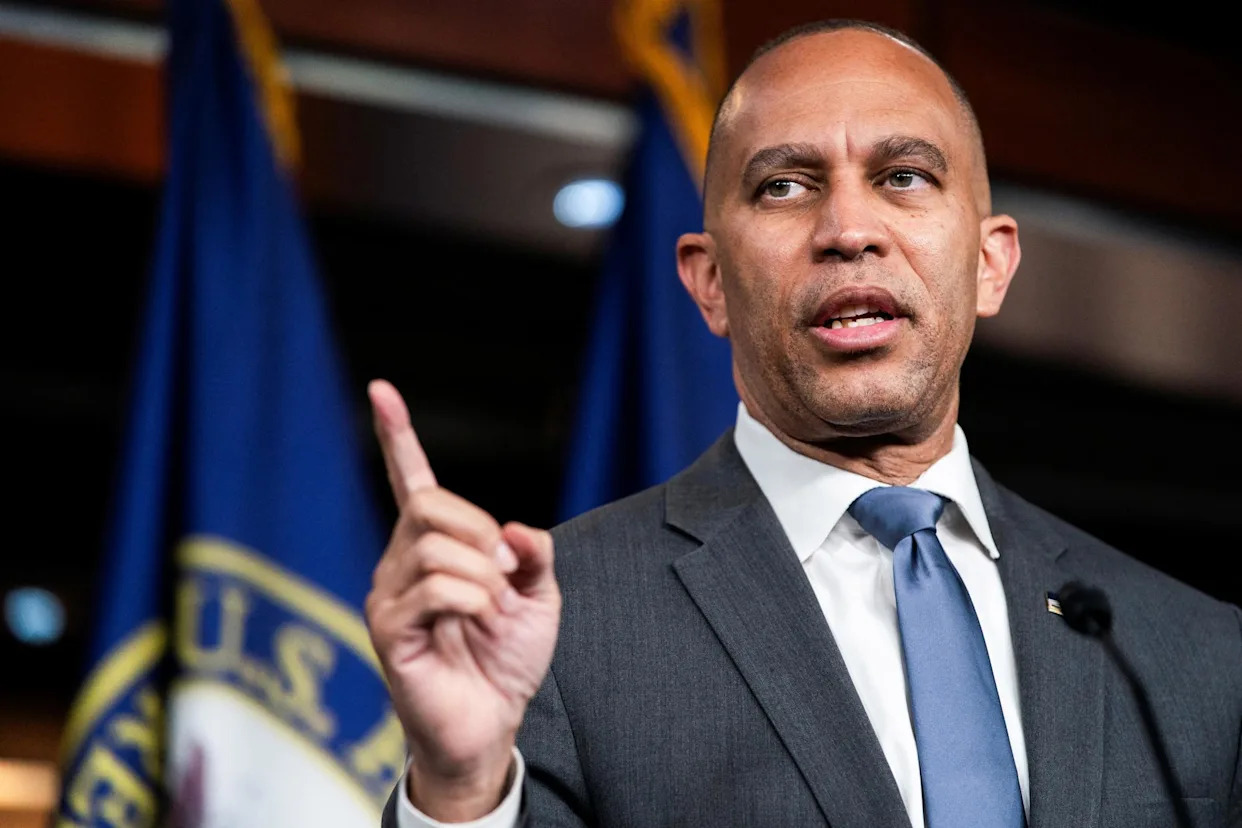
Election results are always subject to wild, often willful, overinterpretation.
In a “we the people” society, the consent of the governed is supposed to be essential, but it often becomes more than that. Elections are choices among imperfect options conducted under changeable circumstances, so absent the kinds of landslides we don’t see much of anymore, figuring out what voters really want can quickly devolve into a kind of electoral astrology. Economic concerns are in Sagittarius rising while social issues are ruled by a waning Jupiter …
Overinterpretation leads to oversteering on policy points. Consider immigration.
The centrality of immigration as a political issue in the past 20 years is easy to explain. After decades of a relatively stable inflow of migrants from Latin America, mostly Mexico, a combination of factors including technological changes, political upheaval and even the earth’s climate created a tidal force of migration from poor countries in the global south on wealthy countries in the Northern Hemisphere, particularly in Europe and the United States.
States in the U.S. West, like California, Arizona and Texas, had been contending with these issues for decades, but the 21st century saw the very real problems become national in scope.
The first serious effort to deal with the new reality came in 2007 from then-President George W. Bush, a former governor of border state Texas. The plan for a “comprehensive” immigration policy would have paired increased border security, temporary visas for migrant workers, a pathway to citizenship for those in the country illegally already and penalties for employers who didn’t follow the new rules.
For a Republican Party already burdened by the weight of the unpopular occupation of Iraq, Bush’s proposal offered an excellent vehicle to hammer the president from the right. The plan was quickly defeated, but had lasting implications. In the 2008 presidential primaries, front-runner John McCain paid a heavy price for his support of the measure before winning a battle of attrition for the nomination.
Nothing had been done to address the issue, but its utility as a political weapon with the Republican electorate had become undeniable.
Meanwhile, Democrats were taking a journey in the opposite direction. Following a heartbreaking defeat in 2004, Democrats consoled themselves with the idea that as America became increasingly ethnically diverse, their party would be ascendant. The reductive, conventional wisdom in the party held that non-white voters, especially Hispanic Americans, would be the key to a new Democratic national majority after the party’s miseries in the post-9/11 world.
The Democratic template for minority politics had been etched in granite 40 years earlier by the rapid recruitment of supermajorities of black voters by Lyndon Johnson’s about-face on civil rights. This template led Democrats to two dangerous overinterpretations: That Hispanic voters were as politically homogeneous as the descendants of enslaved people had been and that a similar struggle for civil rights, in this case the rights of undocumented immigrants, would be catalytic.
When Barack Obama won a commanding victory over McCain in 2008, it powerfully reinforced that narrative among voters of both parties, which reached wildly different conclusions about what to do next. Obama’s unlikely rise and decisive victory were best explained as the products of a singular political talent, a politically incompetent primary opponent and, most of all, backlash against the Iraq War and the financial panic of 2008. But both parties concluded that changes to America’s ethnic composition, particularly through immigration, were at the root of the story.
Can we overinterpret? Si se puede.
Both parties were off and running in opposite directions — both away from the long-standing popular preference for something like what Bush had proposed that paired enforcement with accommodations for immigrants already here illegally — based in large part on this fundamental misreading of election results.
In 2010, Arizona Republicans passed Senate Bill 1070, which, depending on the partisan trip you were on, was either an effort to stop an invasion of immigrants in the county illegally abetted by the Obama administration or pure gestapo tactics in which people could be asked to show their papers just because of how they looked. The legislation spawned imitation by Republicans from Virginia to Kansas, but little consideration that most Americans probably thought both sides had good points to make.
Then in 2012, Democrats counterattacked.
Looking to boost Hispanic voter engagement, in the spring of the election year, Obama ignored Congress and took a constitutionally obtuse executive action shielding immigrants who came to the United States illegally as minors from deportation. When he won reelection, the narrative about changing demographics and changing politics was hardened again. Never mind that Obama’s victory was more easily explained by a combination of candidate quality and the power of presidential incumbency, parties captured by their die-hard primary voters and dogmatically committed to their wrong-headed interpretations of the 2008 election, the 2012 result pushed them farther to the extremes.
Still, nothing had been done about the actual problem, making frustration among the majority of voters that wanted a sensible and humane human solution even greater.
That was how we got to a 2016 election that offered general election voters a choice between two unlikable candidates engaged in extreme pandering on the subject, with Hillary Clinton trying to outdo Obama to the left and Donald Trump trying to outdo everyone to the right.
When Trump pulled off his historic upset that November, the parties again took the wrong lessons, particularly on immigration. Clinton, Democrats concluded, had failed to engage nonwhite voters the way Obama did, meaning her leftward lurch had been insufficient. Republicans, meanwhile, determined that all of the tut-tutting about Hispanic voters and hostile enforcement tactics had been a crock.
That only got worse when Trump blamed his 2020 defeat (when he would occasionally acknowledge it) as the result of the votes of immigrants in the country illegally. His effort to steal a second term was substantially rooted in the misunderstanding of the 2008 results, but cast in an even more sinister shade. It wasn’t that demography was pushing white voters out of power, but that Democrats were encouraging an “invasion” with the aim of disenfranchising legitimate citizens.
The more obvious explanation — the COVID pandemic and Trump’s unsteady leadership during the crisis — got shortchanged in favor of a story that absolved Trump of his failures and aligned with the party’s preferred narrative.
It was then Democrats’ turn to ignore the solid center on the subject. Joe Biden had inherited a pandemic border shutdown as well as many of the popular restrictions of the Trump term, particularly the “remain in Mexico” rules that his predecessor had imposed only after the midterm-year backlash against Trump’s initial harsh measures.
Thinking about his own reelection chances, worried about his party’s primary voters and locked into the old narrative, Biden oversteered wildly for two years after the pandemic border restrictions ended. It was lousy timing, because when the COVID-19 travel ban ended, the pent-up demand among migrants created a flood of new asylum seekers pushed by the same conditions that had created the surge at the start of the century, only worse. When another Texas governor started spreading the pain by busing the migrants north to blue cities, it guaranteed the issue would have national implications.
So when Trump won in 2024, Biden’s immigration incoherence was rightly understood as an explanation of his party’s stinging defeat. A clear-eyed analysis would have shown strong evidence of voter support for a return to the immigration policies of Trump’s first term and his improved showing with Hispanic voters compared to 2020 a ringing affirmation of the status quo ante. Most essentially, it should have been evidence of how wrong Democrats in the Obama era were about the nature and motivations of a diverse and growing Hispanic population in the American electorate.
But, instead, we’re living in yet another overinterpretation oversteer as the Trump administration undertakes the kind of migrant purge that Democrats were accusing Republicans way back in the Arizona crackdown days. The blue team, meanwhile, is demanding a return to Biden-era policies that we all just saw fail with voters in 2024. Eighteen years into the back-and-forth on immigration, and the two parties have become the cartoonish versions of themselves their opponents described at the start.
Having masked ICE agents tearing down protest signs and tasering food delivery guys wasn’t what persuadable voters were looking for in 2024, nor were they principally thinking about building a network of detention camps or mass deportations of those who haven’t committed other crimes. But if you believe that the only path for political survival is reversing the tide of immigration, then this all may look like a long-term winner.
At the same time that Republicans are cheering for unpopular enforcement actions on immigration, though, their party is also undertaking an audacious mid-decade gerrymander in Texas, the hot zone for the immigration fight all along.
What Republicans are betting is that their gains with Hispanic voters in 2024 will be so durable that they can score five additional seats in the House by making some of their bright-red districts a little more competitive. But what if the same Hispanic voters who disapproved of the Biden profligacy on crime and immigration disapprove of the heavy-handed tactics from the Trump administration?
Given how much Texas Republicans are relying on these newly Republican Hispanic voters in their new map, even a modest victory by Democrats with Hispanic voters in Texas could make the Texas-sized gerrymander into a costly bust for the party in power.
And if that is what happens, what will Democrats probably do? You know it: overinterpret and oversteer on immigration yet again.
Since 2007, we’ve seen at least three serious efforts to try to deliver some kind of sensible, coherent immigration policy in a bipartisan way: Bush’s plan, the 2013 “Gang of Eight” effort that Democrats used to torpedo then-Sen. Marco Rubio’s (R-Fla.) presidential hopes and a 2024 effort that candidate Trump killed rather than give Democrats a win on his key issue.
That’s the kind of solution that majorities of voters say again and again that they want. But what they keep getting are binary choices between two increasingly radical views.
Behold the awesome power of willful electoral interpretation.
Chris Stirewalt is the politics editor for The Hill, veteran campaign and elections journalist and best-selling author of books about American political history.
Copyright 2025 Nexstar Media, Inc. All rights reserved. This material may not be published, broadcast, rewritten, or redistributed.
For the latest news, weather, sports, and streaming video, head to The Hill.






Comments